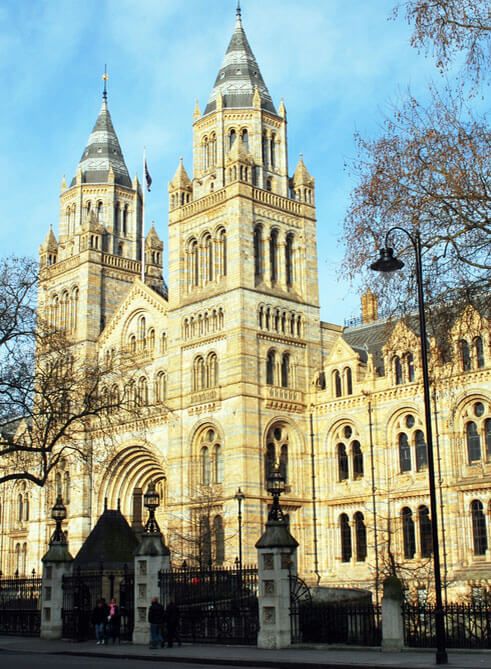
Diving Blue Whale takes centre stage at Natural History Museum
The vast skeleton of a blue whale is to welcome visitors as the central display in the Natural History Museum’s Hintze Hall from summer 2017. Suspended dynamically from the ceiling and plunging through the iconic space, it will take on the role held by the much-loved Dippy for 35 years.
The installation of the blue whale skeleton will be part of a complete re-display of Hintze Hall being undertaken to lay bare the relationship between humans and the natural world.
While planning the whale’s move from its current home in the mammals gallery, the Museum is exploring how the Diplodocus cast can be enjoyed by an even wider audience longer term.
The Museum’s collection is one of the world’s greatest scientific resources for understanding the natural world. This marks the beginning of a decade of transformation for the Museum described in its new strategy.
The Museum plans to change how it creates and shares its scientific research and how the collection is developed and displayed for future generations so that engaging with the natural world is a part of everyone’s lives.
Sir Michael Dixon, Director of the Natural History Museum, commented:
“As the largest known animal to have ever lived on Earth, the story of the blue whale reminds us of the scale of our responsibility to the planet. This makes it the perfect choice of specimen to welcome and capture the imagination of our visitors, as well as marking a major transformation of the Museum.”
“This is an important and necessary change. As guardians of one of the world’s greatest scientific resources, our purpose is to challenge the way people think about the natural world, and that goal has never been more urgent. The very resources on which modern society relies are under threat. Species and ecosystems are being destroyed faster than we can describe them or even understand their significance. The blue whale serves as a poignant reminder that while abundance is no guarantee of survival, through our choices, we can make a real difference. There is hope.”
Since this whale skeleton came to the Museum in 1891, blue whales have been hunted to near extinction before starting to recover their numbers after they gained protected status.
The Museum’s collection is one of the world’s greatest scientific resources for understanding the natural world, for both experts and the public. Through the expertise of Museum scientists and by opening up access, the Museum is tackling the big issues facing humanity and the planet:
- The origins of our solar system, planet, and life on it, and predicting the impact of environmental change
- The diversity of life and the delicate balance of ecosystems on which humanity depends
- The security of our food supply, the eradication of disease and the management of mineral and ore scarcity.




















